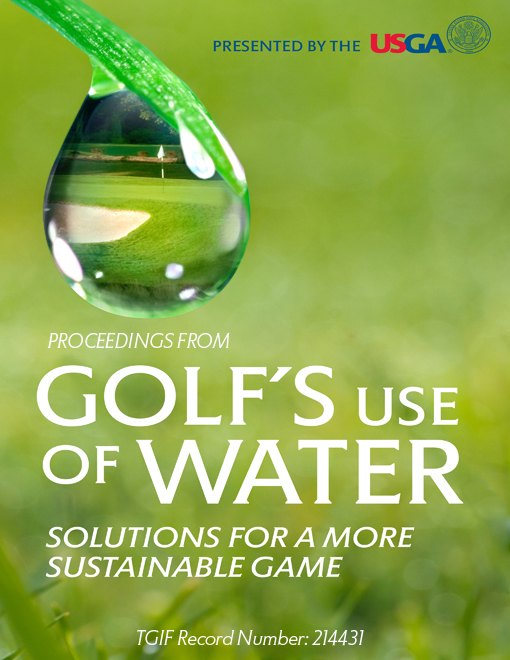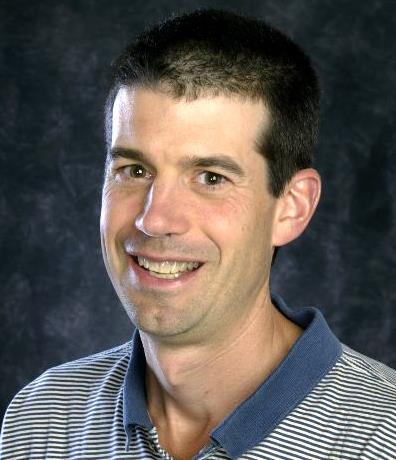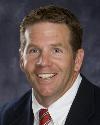USGA Water Summit
View the full presentations from the Water Summit below. |
 |
View the full proceedings from the USGA Water Summit. |
Veronica Blette | Chief, WaterSense Branch | U.S. Environmental Protection Agency
|
||
| Federal Perspectives on Water and Golf The presentation will provide an overview of how the EPA, other federal agencies and businesses are looking at potential risks associated with water shortages and lack of access to clean and safe supplies of water. Veronica will describe how WaterSense is promoting more efficient use of water and how the golf industry might address this challenge above and beyond its current efforts. View The Presentation |
Mary Ann Dickinson | President and CEO | Alliance For Water Efficiency
|
||
| A National Perspective on Water Issues Water has emerged as a topic of constant discussion, but what is actually happening with water? Are we really in a water crisis? What are the issues facing local communities and by extension, golf course managers? This presentation will explore a few myths about water and make recommendations for positive action in the future. View The Presentation |
Mark Esoda | CGCS - Golf Course Superintendent | Atlanta Country Club, Georgia
|
||
| Starting With an Open Hand: Working With Regulators and Legislators When dealing with regulators, most industries tend to do the minimum to meet compliance issues and then attempt to stay under the radar. To handle legislative issues the public tends to protest or “Occupy Downtown.” There are different and likely even better, ways to affect policy. Regulators want help doing their jobs. Golf also has a public perception problem. In Georgia, we had to ask the hard question: “What can we do to help conserve water that proves we are good managers/stewards of the resource?” Change is difficult but the golf industry stepped up to prove the world wrong using a self-policing BMP program, stepping up to work with agencies on various committees and introducing educational pieces. The result is increased positive awareness and improved water conservation. View The Presentation |
Greg Lyman | Director of Environmental Programs | GCSAA
|
||
| How Much Water Does Golf Use and Where Does It Come From? The Golf Course Environmental Profile conducted by the GCSAA is a project dedicated to collecting data from the United States on the property features, management practices and inputs associated with golf courses. This presentation will feature information on irrigation water use patterns, water sources, costs, conservation practices and irrigation system infrastructure. Future water use trends and recommendations will also be discussed. This project was funded through support from the Environmental Institute for Golf. View The Presentation |
Doug Bennett | Conservation Manager | Southern Nevada Water Authority
|
||
| Lean and Green: Water Efficiency in the Las Vegas Golf Industry Las Vegas is home to some of the finest desert golf courses in the nation. A crippling 12-year drought on the Colorado River has challenged water supplies for this fast-growing city, requiring officials to make dramatic changes to water use policy. Since 2003, area golf courses have operated under a water budgeting policy that assures greater efficiency, while sustaining a high quality golf experience. Since the inception of drought, 30 golf courses have converted more than 40 million square feet (918 acres) of non-essential turfgrass to water-efficient landscape designs. Collectively, these conversions are saving more than 2.2 billion gallons of water annually. View The Presentation |
Chris Hartwiger | Director | USGA Course Consulting Service
|
||
| Maintenance Up The Middle: Great Golf and Water Conservation are not Mutually Exclusive. The enjoyment of golf is shared by many and can last a lifetime. As social, environmental and economic realities shift, the way golf courses are maintained will advance. The changes in the perception and the use of water resources on golf courses can serve as a catalyst to promote maintenance up the middle which, in turn, will lead to a more enjoyable and affordable game. View The Presentation |
Pat Gross | Director | USGA Green Section, West Region
|
||
| Case Studies in Water Use Efficiency in California This presentation provides practical examples of how golf courses in California implemented programs to reduce water use. Three courses are highlighted that took effective yet different approaches. Specific examples include turf reduction projects, conversion to lower water use grasses along with a voluntary reduction in water use, and effectively dealing with mandatory cut-backs through the LADWP Golf Water Task Force. View The Presentation |
Dr. Ali Harivandi | Environmental Horticulturist | University of California - Davis
|
||
| Irrigation Puzzle: Sourcing Water For Golf Courses The most important issue facing the golf industry worldwide is water, or lack of it! Population increases and drought have resulted in golf courses successfully converting from potable to recycled water for irrigation. The golf industry has already overcome, through excellent educational outreach, the negative stereotype of irrigation with recycled water, and consequently, golf courses increasingly turn to the use of recycled water. The primary question has become not whether to switch to recycled water irrigation, or even how to manage irrigation with this new source, but how soon an individual course can access a recycled water source. View The Presentation |
Dr. Mike Kenna | Director of Research | USGA Green Section
|
||
| Research Accomplishments to Meet The Present and Future Water Use Needs of Golf Almost 30 years ago, the USGA organized the Turfgrass and Environmental Research Committee with the primary purpose to develop minimal maintenance turfgrass cultivars that conserve water, as well as tolerate temperature extremes, salinity and pests. With the USGA providing more than $30 million in financial support of universities, new cultivars were introduced, water use efficiency was improved, and new irrigation technology was developed. More importantly, this program redirected university research to focus on water conservation, while improving the adaptation and management techniques of the turfgrasses used on golf courses. View The Presentation |
Tim Hiers | Golf Course Superintendent | Old Colliers Golf Club, Florida
|
||
| Irrigating With A Toxin Water quality and quantity are major challenges for golf courses in Florida. At Old Collier, we have taken the unique approach of converting to turfgrass that uses a water supply previously thought unsuitable for fine turf. However, the use of this water brings new challenges that must be overcome to make this a viable, long-term solution for the golf industry. View The Presentation |
Brian Whitlark | Agronomist | USGA Green Section, West Region
|
||
Water Use Efficiency Techniques from the Southwestern United States This presentation highlights water conservation strategies used by turf managers in the southwestern United States. Practical examples include irrigation redesign and upgrading nozzle technology, modifying irrigation programming, improving soil properties, utilizing new soil moisture sensing technologies and converting to recycled water. View The Presentation |
|
||
| Water Impact on Golf Development and Operations From entitlements and permits to direct operating expenses, water influences the economic development and operations of golf facilities in several ways. Specifically, Jim and Henry will address the key financial indicators influenced by water and best management practices for facility development and operations. You will hear a brief forward-look at emerging trends related to the use and misuse of water in golf facilities. View The Presentation |
Karen Guz | Director of Conservation | San Antonio Water System
|
||
| Making Hard Decisions About Hard Times: Benefits of Proactive Drought Planning Texas has experienced extreme weather conditions in recent years with drought restrictions present in some areas for three out of the last four years. In areas where drought management plans had never been used, 2011 caused them to be dusted off and given a strong reality check. This now presents the opportunity to have realistic discussions about how to manage and conserve water every year to minimize drought impacts and how to manage the extreme droughts we know may come. The challenge is to balance the need to secure water for health and human safety, the need to manage water costs, and the need to have economic security for industries that depend on water as part of their business. Thoughtful planning and proactive programs are needed and can avert many of the negative consequences of poor drought planning and implementation. View The Presentation |
Dana Lonn | Managing Director | Center For Technology, The Toro Company
|
||
| Shifting Watering Decisions From Art to Science Using water efficiently is a tough problem. We are trying to replace a perfect irrigation system in natural rainfall with an artificial process. With limited supplies of water, we must be certain that we are using water where, when and how much is needed. Accomplishing this goal drives us to utilize science and technology. We need more control and feedback to aid people in making decisions that optimize performance and minimize inputs. View The Presentation |
Bob Farren | Director of Golf Courses and Grounds Management | Pinehurst, LLC
|
||
| Uncovering The Past To Find Our Future In March 2010, Pinehurst embarked upon perhaps one of the boldest golf course restoration projects ever undertaken. The firm of Coore/Crenshaw was challenged with recovering or uncovering the aspects of Pinehurst No.2 that made it one of Donald Ross’ greatest designs. After a great deal of research it became apparent that the majority of the changes to the course design and strategy could be attributed to, in one way or the other, the automation and expansion of the irrigation systems to support numerous acres of turf. The project resulted in a reducing the total acres of irrigated turf from 90 acres to 50. The total number of irrigation heads has been reduced from 1150 to 450. The “old school” center line irrigation in the fairways now determines the strategic lines of the course. The turf quality and resiliency is far more predictable the closer you are to the center of the otherwise expansive fairway lines. View The Presentation |
Bill Love | President | WR Love Inc.
|
||
| Designing Golf Courses For Water Conservation How can golf courses be more sustainably designed to use less water? This presentation includes an examination of the issues impacting golf course design and the management of water resources. Water conservation on golf courses begins by addressing the issues of resource management and conservation throughout the design process for new golf courses and the renovation of existing facilities. View The Written Article View The Presentation |
Rick Robbins | President | Robbins and Associates International
Golf Course Water Use - An International Perspective Rick will present information about the relationship between golf course development and water use in China. This is a subject that has many implications for Chinese social and political culture. Water use and water quality as affected by golf development in the past and some ideas for improving this relationship in the future will be discussed. View The Presentation |


















